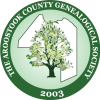Was the Term “Eavesdroppers” Coined From a Misunderstanding of Architecture?
In Secrets of Henry VIII’s Palace:
Hampton Court, it is claimed that little painted figures of human faces carved into the ornate ceiling beams of Hampton Palace as though surreptitiously observing the people below inspired the term “eavesdroppers” uninvited listeners to other people’s conversations whether for (sick) pleasure or intrigue.
Heaven knows there was no shortness of intrigue in Henry VIII’s court. In fact, Hampton Court became the Royal Court because of political intrigue.
Thomas Wolsey, cardinal of the Catholic Church, was appointed to Henry VIII’s Privy Council and, being a wily politician who knew how to win the King’s favor, soon became Chief Minister, and gained influence and wealth.
The site where Hampton Court is today used to be the property of the Order of Knights of the Hospital of Saint John of Jerusalem, a medieval military Catholic Order.
Wolsey took over the property in 1514 and started building lavishly. By 1525 when the construction work was completed, Henry and his court stayed at Hampton Court to as …ummm permanent guests. Wolsey gave Hampton Court to Henry as a gift. Henry started expanding Hampton Court. The Great Hall where on-looker figures on the ceiling were incorporated was built between 1532 and 1535.
According to linguist Karen Stollznow: “Eavesdropper” comes from the Old English yfesdrype that meant:
“Place around the house where the rainwater drips off the roof.”
The word appears around the 1500s as a name for people who lurked under the eaves of a house to overhear what’s going on inside. The verb form, to “eavesdrop”, didn’t appear until a century later, and is a shortening of “eavesdropper.”
So, usage of the word “eavesdropper” coincides with the building of the Great Hall of Hampton Court.
Respectfully Submitted by Orlan Smith

